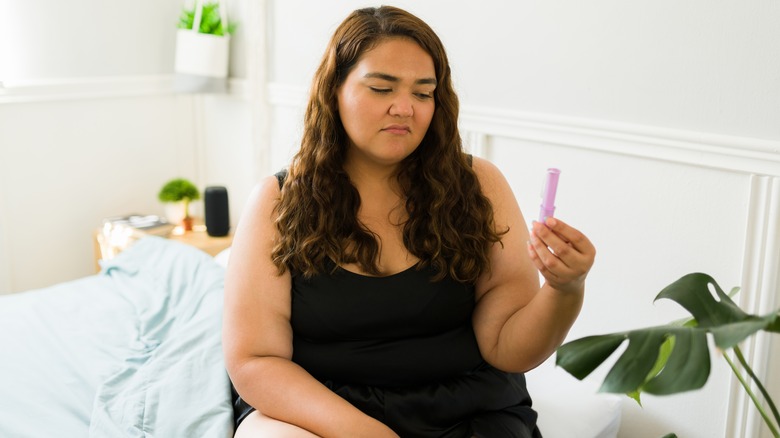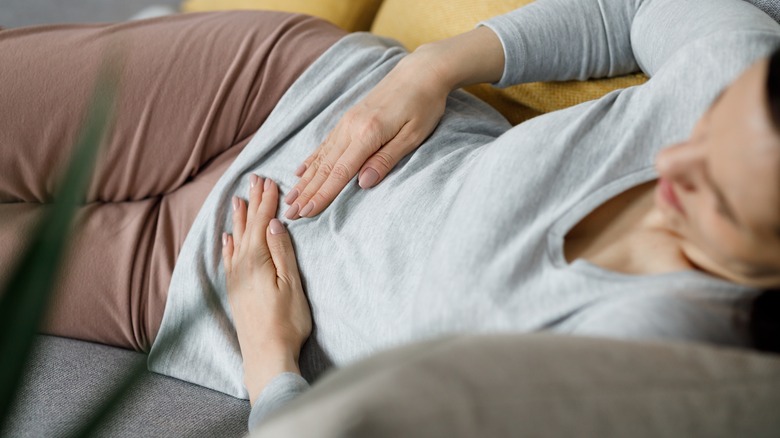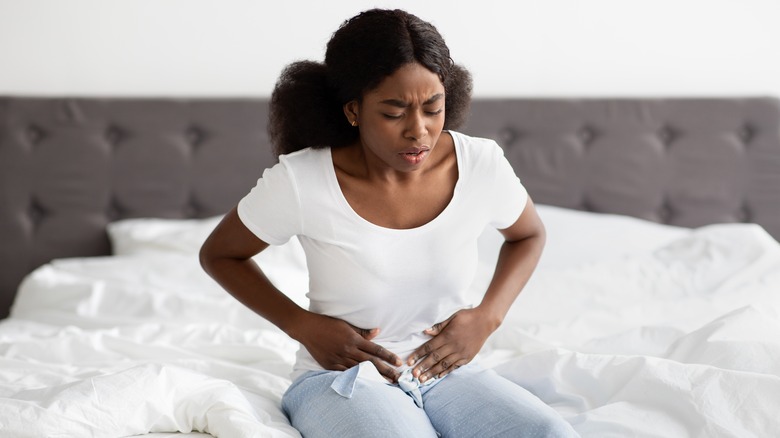How Exercise Can Change Your Period
The menstrual cycle is a delicate dance between hormones, ovaries, and the uterus, with each step of the process tightly regulated to ensure that everything runs smoothly. The cycle occurs in the female body on a regular basis and involves a series of hormonal changes and physiological events that ultimately lead to the shedding of the uterine lining, known as "menstruation," says the National Health Service (NHS). Typically, the menstrual cycle averages 28 days but can extend to as much as 35 days. It consists of four phases: the menses phase, the follicular phase, the ovulatory phase, and the luteal phase, says the Cleveland Clinic.
However, like any dance, even the slightest misstep can throw everything off balance. While exercise is generally known for its many benefits, it can sometimes have deleterious effects on the menstrual cycle. In this article, we will explore the various ways in which exercise can affect your period.
Irregular periods
When you have irregular periods this means you have menstrual cycles that vary in length, duration, or intensity from month to month, per the Cleveland Clinic. It is common for many women to experience irregular periods at some point in their lives, but the causes can vary. Exercises that cause low body fat are one common cause of irregular periods. Furthermore, frequent exercising without adequate calories can reduce the sex hormone estrogen and increase the stress hormone cortisol, which can cause irregular periods, per Rupa Health.
Other factors contributing to irregular periods include stress, thyroid disorders, polycystic ovary syndrome (PCOS), and other medical conditions, says the Cleveland Clinic. That being said, the effects of exercise on the menstrual cycle can vary depending on the type and intensity of exercise. For example, low- to moderate-intensity exercise may positively impact hormonal levels, according to Rupa Health. Cleveland Clinic recommends resting adequately after training to enhance recovery.
Stopped periods
In addition to impacting menstrual regularity, exercise can stop periods altogether — a phenomenon known as "amenorrhea," per the Cleveland Clinic. This is particularly common among female athletes or women who engage in high-intensity exercise.
Amenorrhea is generally categorized into two types: primary and secondary amenorrhea. "Primary amenorrhea" refers to the absence of menstruation by age 15 or within the first five years of having other signs of puberty, such as the development of breasts and pubic hair. Primary amenorrhea is usually due to either genetic or acquired conditions.
Secondary amenorrhea, on the other hand, refers to the absence of menstruation for at least three consecutive menstrual cycles in women who have previously had regular menstrual cycles, says the Cleveland Clinic. Excessive exercise can be a cause of secondary amenorrhea.
One possible explanation for why exercise can cause amenorrhea is that high-intensity exercise can cause the hypothalamus gland in the brain to stop producing gonadotropin-releasing hormone, triggering an end to menstruation, explains the Eunice Kennedy Shriver National Institute of Child Health and Human Development (NICHD).
Reduced or increased fertility
Fertility is closely linked to the menstrual cycle, and exercise can impact fertility in various ways. For example, as mentioned earlier, frequent exercising without consuming the right number of calories can impact estrogen production, a critical hormone for fertility. Low estrogen levels can lead to irregular ovulation or even stop ovulation altogether, reducing fertility, says The Fertility & Gynaecology Academy.
A 2016 study published in the American Journal of Lifestyle Medicine also reiterates that too much physical exercise can increase the risk of infertility due to anovulation — this happens when your ovaries fail to release an egg (via the Cleveland Clinic).
However, although vigorous exercise is linked to infertility, moderate regular exercise can actually benefit conception, as revealed in an article by The Fertility Society of Australia. Moderate exercise can also help regulate weight, improve cardiovascular health, improve mood, reduce stress levels, and reduce the risk of chronic diseases, all of which can contribute to your overall well-being, says Healthline.
Reduced PMS symptoms
As mentioned above, exercise doesn't always negatively affects your period. Research has shown that regular exercise can help reduce the severity of PMS symptoms, such as cramping, bloating, mood swings, and fatigue.
One 2013 study published in the Iranian Journal of Nursing and Midwifery Research found that aerobic exercise can help reduce PMS symptoms. Another 2015 study published in the Journal of Obstetrics and Gynaecology reiterates this claim. According to this study, engaging in aerobic exercise positively impacted blood composition and hormonal balance in the subjects involved. Regular aerobic exercise also increased hemoglobin and red cell count levels while reducing progesterone levels, which resulted in improvements in symptoms such as fatigue, confusion, impaired concentration, and other premenstrual symptoms, per the study.
The decrease in PMS symptoms might also be due to the fact that exercise can stimulate the release of endorphins, which are natural painkillers, according to the Cleveland Clinic.
Finding the right balance
While exercise can positively and negatively impact the menstrual cycle and fertility, finding the right balance is important. As established, you may be at a higher risk of developing menstrual irregularities or amenorrhea if you engage in high-intensity exercise or are training for competitive events. For this reason, listening to your body and being aware of any changes in your menstrual cycle is essential.
If you are trying to conceive, be mindful of the impact of exercise and diet on fertility. While regular exercise and good nutrition can improve fertility, too much exercise or extreme dieting can have the opposite effect and can cause stress on the body.
It's always best to consult with your doctor before engaging in a rigorous exercise routine. They can help identify any potential risks or limitations that may need to be considered and can provide guidance on safety and the best types of exercise for your specific needs and goals.






